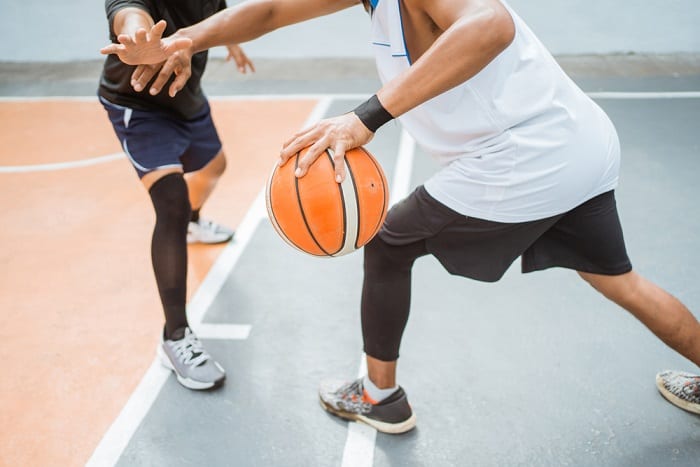- The Jump Manual Review By A Pro Player [Bonus Included] - September 23, 2023
- 3 Best Basketball Shoes For Casual Wear [September 2023] - September 3, 2023
- 5 Best Basketball Shoes For Jumping [September 2023] - August 25, 2023
With even top NBA referees ignoring the carry, it’s no surprise that this is one of the most debated topics in basketball games and amongst basketball fans.
It has been there even before we started playing professional games.
Although spotted among top basketballers like Isaiah Thomas, many are still unaware of this move. And this is primarily because it no longer gets called out as much as in previous years.
So, what is a carry in basketball? A carry in basketball is an offense in which the player stops dribbling the ball or adjusts the ball’s direction by momentarily positioning their hand underneath it.
Nonetheless, identifying a carry in basketball is not as simple as expressed above. You may easily confuse it for new moves like crossovers and the Hesi as a player stops in both.
In this article, we comprehensively unravel what a carry in basketball entails and clearly distinguish it from such moves. Moreover, we talk about its penalties, avoiding it, and whether high dribbling amounts to it.
Which NBA player has the most carrying incidences?
Dive in for that and more.
Contents
What Is a Carry in Basketball?
Despite being a basketball rule for a long time, some basketball players don’t get the hang of what amounts to carrying. At its invention, players didn’t dribble during basketball. But with the many revisions on how to play this game come numerous rules.
Understanding a carry in basketball isn’t complex. Just as understanding what is a field goal.
But with its reduced penalization rate and with the many basketball rules the game has, it may be challenging to grasp what carrying is.
Carrying is a traveling offense. A carry violation occurs when ball handlers palm or hold the ball for considerably long without dribbling.
The offender continue dribbling after the ball rests in their hand for long enough to disorient the dribbling motion.
For the referee to call it in, one has to position their palm facing underneath the ball’s plane when changing its course or in a manner that breaks dribbling.
Watch the video below for more info:
That said, it isn’t common to witness ball handlers getting flagged for carrying in basketball.
But why?
For starters, some referees believe that this violation lacks an impact on the game’s tally. Others believe it affects today’s game but still ignore it. Calling it in may continuously halt action making the play uninteresting.
Moreover, it isn’t always possible to spot the offense as the player continues to dribble. Mainly, a quick game or the referee’s position may deter them from capturing every move.
In addition, check out my article and understand what does PF mean.
Different Types of Carrying in Basketball
Based on ball handling, they may commit carrying in two main ways, including:
- A double-dribble carry
- Traveling carry
So, how do you distinguish carry double-dribble from a carry traveling?
Double-Dribble Carry
As a player dribbles, they may place their hand on the lower half of the ball, hampering it from bouncing. A double dribble occurs if the player proceeds to dribble.
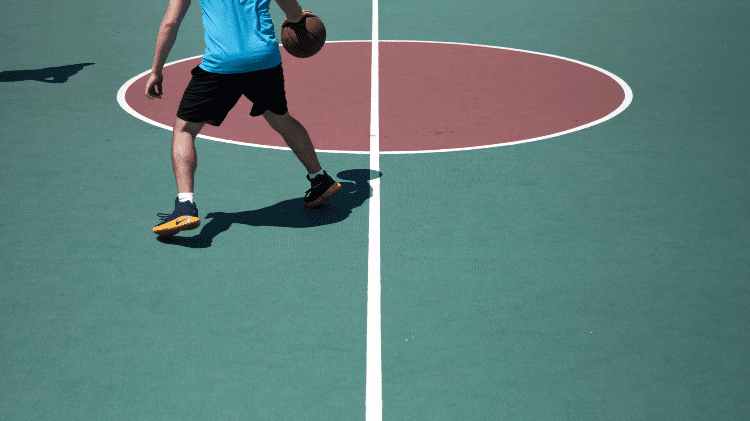
In a nutshell, a double-dribble carry occurs when one pauses between dribbling to hold the ball in their palm temporarily. Most players caught on a carry double dribble planned to get past a defensive player.
Travel Carry
A travel carry is different from carry double dribble as it occurs when the ball pauses momentarily with the dribbling player still in motion and their hand placed on the lower half of the ball.
In this case, the player decided to move forward without dribbling while still holding the ball upward.
Hand Signal When a Player Commits a Carry
To signal a carry double dribble or carry traveling in professional games, the referee stretches their hand with their palm positioned skywards upon blowing the whistle to signal a carry violation to the table officials.
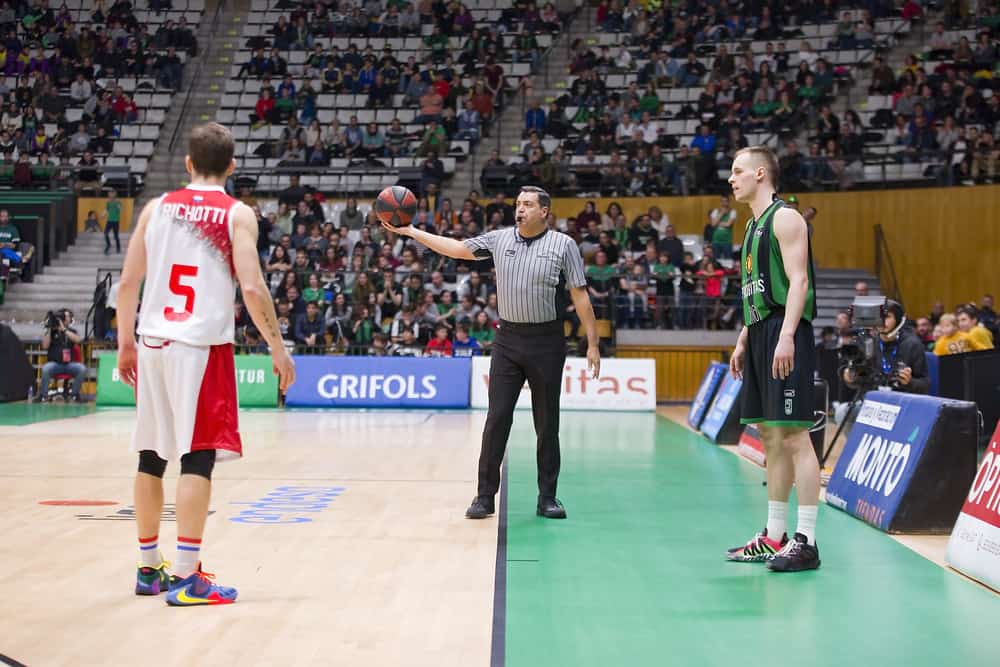
Afterward, the referee rotates their wrist upside down to mimic the carrying action. Sometimes, the referee repeats these movements when notifying the table officials when a carry traveling occurs or double dribble occurs.
What’s the Penalty for Carrying the Ball?
Whether it’s a carry double dribble or carry traveling, the team whose member performs it gets a turnover.
The referee offers the ball to the opposing team on the touchline at the spot where the carry violation happened.
Note that turnover in this instance only happens when the referee signals and responds to a carrying call during basketball games.
Is Dribbling the Ball High a Carry?
At times, you may see players dribble the ball past their shoulders. This is considered a carry in basketball by some older players, but is that true?
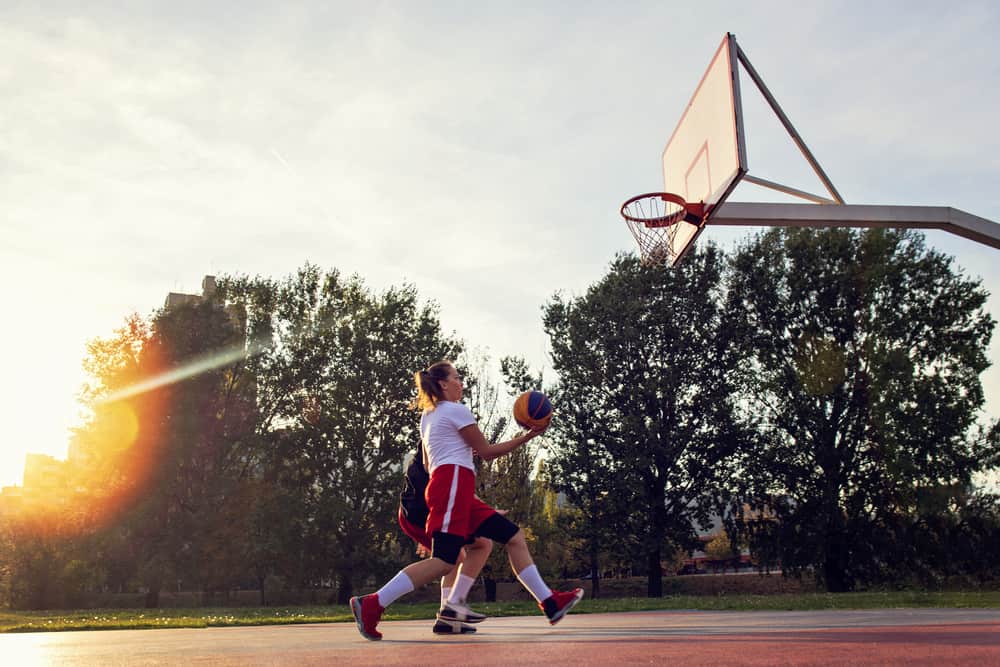
To understand this, consider what a carry entails:
- Your palm is on the ball’s underside
- You momentarily pause the ball’s dribbling motion
- You move some paces with the ball in your hand without dribbling
With this in mind, high dribbling does not amount to carrying the ball, provided your palm is on the ball upward section. Simply ensure you don’t rest the ball in your right hand or left hand irrespective of how high you dribble it.
However, high dribble isn’t the best move, particularly for unseasoned players. As you dribble the ball beyond your shoulders, chances of control loss are higher.
As a result, you may end up palming the ball. And this attracts a penalty if noted by the referee.
That said, seasoned players sometimes dribble the ball above their heads. However, they tend to accompany this movement with bent knees and a lowered body position to avoid palming the ball.
Doing this enables them to prepare mentally and physically to get a burst of energy that helps one reach the basket faster.
How to Dribble Without Carrying the Ball
To dribble the ball without a carry violation, ensure your hand is on the ball’s top.

Alternatively, dribble the ball with the hand on its sides. Not only is this an accepted stance, but it also offers the ball handler a better ball control.
However, ensure your hand doesn’t slip and amount to a carry. Beginners find ball handling challenging but with time, they get used to it.
How Long Can You Hold the Basketball Without Dribbling?
You can move up to one and a half steps in between dribbles without penalization. On the other hand, moving two steps or more without dribbling result in penalization on traveling grounds.
That said, you may notice some individuals get away with even three steps without dribbling during a fast-paced match.
People often escape the referee’s scrutiny by sprinting or a step back, so it’s challenging to determine the dribble to step ratio precisely.
How to Stop Carrying the Ball?
The simplest way to avoid carry traveling is ensuring your palm faces down whenever dribbling.

Dribbling without carrying makes it challenging to cross over or do shot fakes. Nonetheless, a ball handler can nail dribbling with practice.
Special Moves Many Mistake as Carrying
Spotting carrying violations isn’t always easy as there are many tricks you can perform in basketball.
You may hear basketball fans shouting that a particular move is a carry, yet the referee allows the match to proceed.
While it may be an oversight, it may also be a different move that resembles basketball carrying violations.
Some of the movements a ball handler makes that are commonly taken to be carrying violations include:
- Crossovers
- The Hesi
- Stationery dribble
- Overhand crossover
So, how can you differentiate these four from carrying?
Let’s see.
Crossovers
Crossovers allow you to trick the opponent or the offensive team into thinking you are going in a particular direction when you intend to go the other direction.
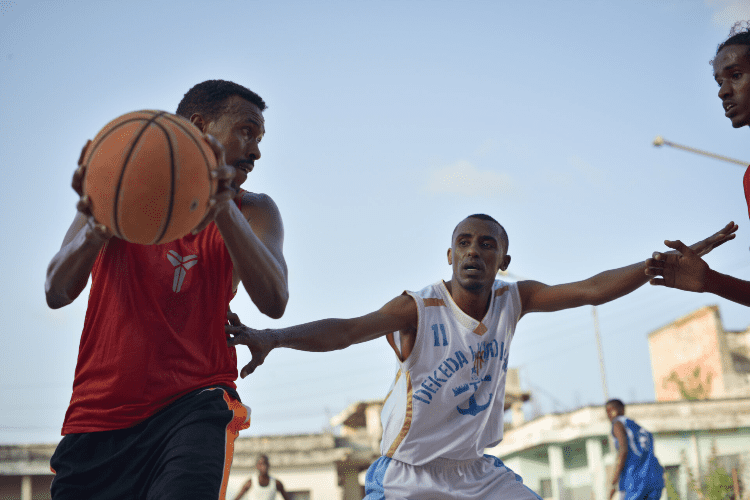
This way, you can make a complete stop and step out of the defender’s path.
In summary, a hand crossover occurs when you direct the ball against its trajectory. Hence, it moves from right to left or otherwise.
If you want to execute a crossover, ensure your feet remain behind the line of the basketball.
The Hesi
A hesi also known as hesitation dribble is a move where a ball handler “hesitates” to dribble the ball in one motion. The idea here is to confuse the opposition.
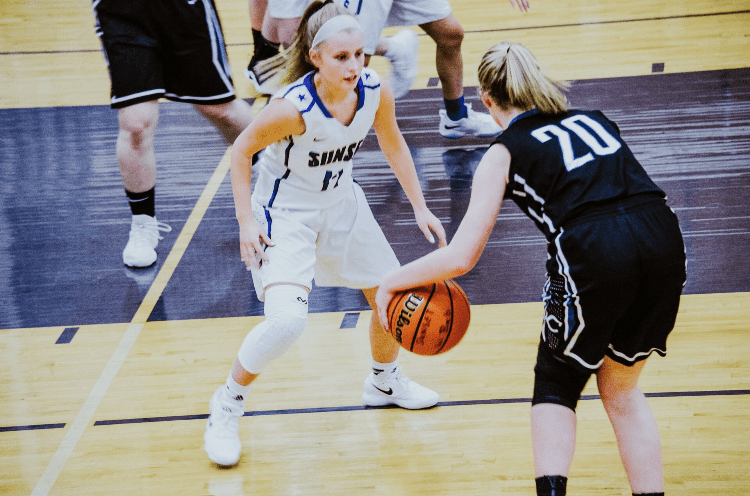
As you perform the hesitation move, you make the defender in the opposing team rise and try blocking a false attempt while you continue dribbling.
This move is handy when you have no time to complete a pass. Here, a player dribbles down the pitch to the three point line and assumes a stance as if they want to make a basket.
With little skill, you may find yourself carrying the ball while trying to perform the hesitation move, while holding your shorts.
To do the hesi, move as if you are picking the ball with your other palm, wait momentarily and resume dribbling as quickly.
Stationary Dribble
A stationary dribble is a move where you stand still while dribbling the ball at a low speed. There are various ways to perform the stationery dribble, including:
- Repeated dribbling using either hand
- Bouncing the ball from one to the other hand while in the same position.
- Dribbling the ball in and out, between your legs
While executing the dribble, an aggressive from the other team may pressure you to squeeze the ball, attracting a penalty.
If you cannot maintain balance while performing the dribble, you may find yourself carrying the ball and committing a foul.
Overhand Crossover
An overhand crossover is another move meant to help you outsmart a player from the other team at the pitch’s center.
To perform this trick, you shift the ball from your regularly-used hand to the other. Doing this allows you to pass an opponent and even score from the three point line.
The Controversy Around the Topic
While common, it isn’t easy for referees to spot a carry.
The main reason why spotting a carry violation is challenging is the game’s quick pace. In fact, a player may execute a carry severally within seconds.
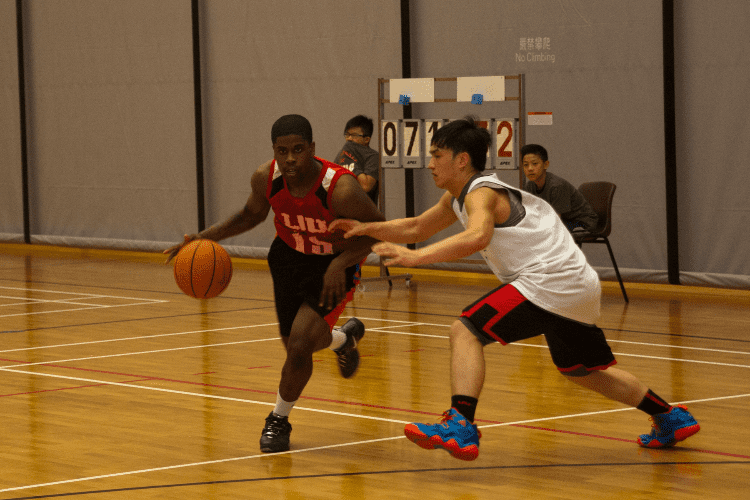
Hence, if you are looking for a carry, you should look out for it within a short period.
Another reason why spotting a carry is difficult in professional games is due to the way some players disguise their legal moves.
For instance, some players may turn away to fool referees and deter them from capturing everything.
Also, people find spotting a carry difficult because most players execute a carry amidst performing a technique like the hesitation dribble or crossovers.
In such cases, they may conduct a carry because they are trying to retain possession of the ball.
An excellent way to identify a carry is to watch the player closely. If they are making no effort to pass the ball, then the chances are that they are about to foul themselves, such as by carrying.
Who Makes the Most Crossovers in the NBA?
Many top players do crossovers in professional leagues like NBA games.
However, the most popular is Allen Iverson, who notes that the technique is what made Allen Iverson stand out. Some even credit him as this style’s inventor.
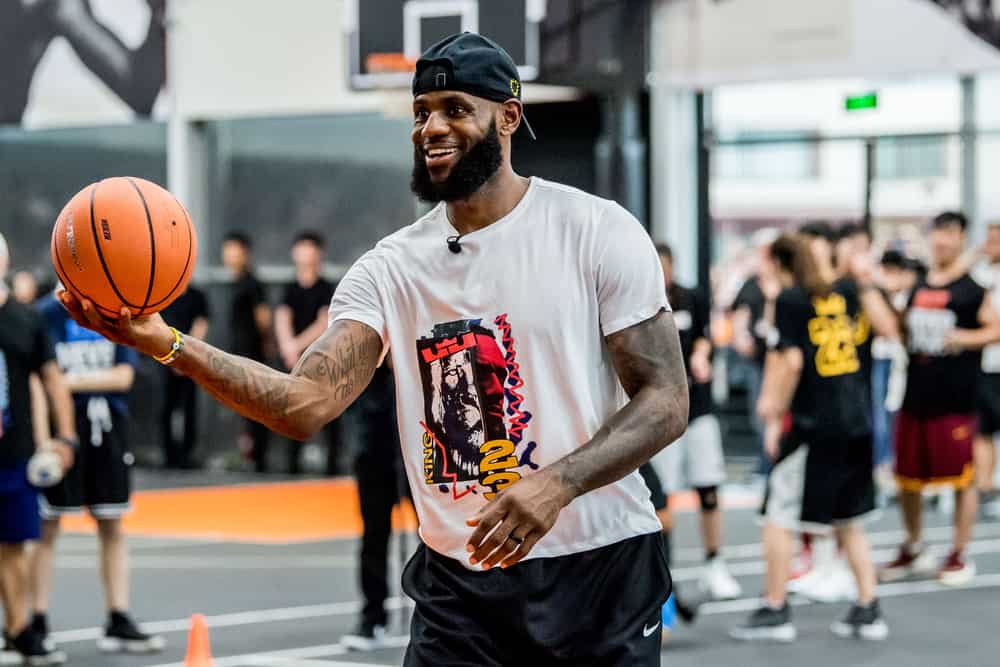
So unique is Allen Iverson execution technique that many believe him to be carrying rather than performing a crossover.
Allen Iverson crossovers involve different moves from left to right, enhanced by his defenses.
At one point, he even noted that his crossover moves were a kind of carry that didn’t adhere to the NBA carry-identification criteria.
Nonetheless, Allen Iverson is still amongst the most celebrated basketball players.
There are also many NBA players known for crossovers. Some of them include:
- LeBron James
- Chris Paul
- The late Kobe Bryant
- Carmelo Anthony
- Dwyane Wade
- Kevin Durant
- Derrick Rose
- Stephen Curry
- Russell Westbrook
- Kyrie Irving, and more
Mike Jordan legendary crossovers also helped Chicago Bulls win titles.
Which NBA Player Carries the Most?
Carrying is quite common during the NBA games, with many players embracing it. And this is no surprise seeing as NBA referees are slow or not fond of penalizing the momentary rest.
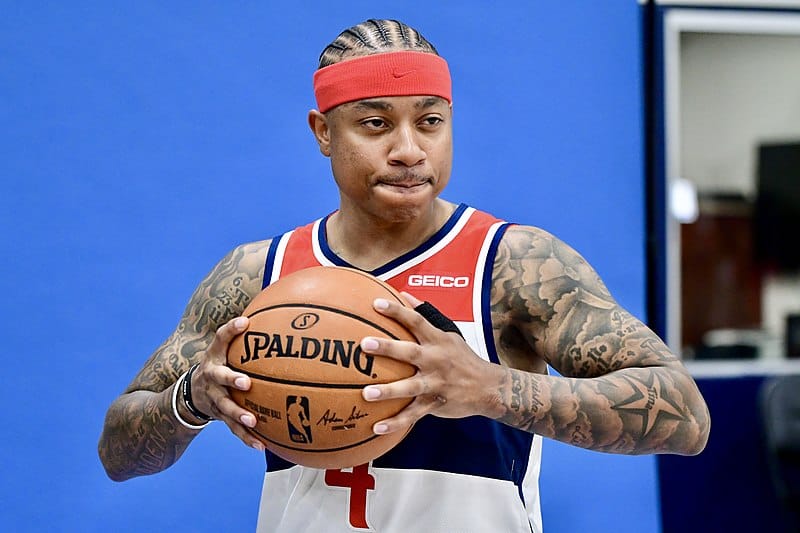
Regardless, some players tend to carry the ball excessively. Isaiah Thomas is arguably one of the players who carry the ball a lot. According to one person, he carries the ball so much that he can do several carries in a single move.
The worst things about Isaiah Thomas’ carrying habit are:
- He spends way more time with his palm on the ball’s underside
- He takes relatively a lot of steps while the ball stops in his arms.
- His palm is way on the ball’s underside instead of a miscalculated dribble on the side.
- Cupping the constantly while dribbling
At one time, Fred Hoiberg, the then Bulls coach, called him out for the violation after losing.
While his calls didn’t assist the Bulls, it remains that Thomas is among the most incessant violators with the same consequences in carrying.
Some other basketball players in professional leagues with most ball stops are Trae Young and James Harden.
Some argue that Kevin Durant also carries the ball. Nonetheless, his crossover technique is almost like that of other NBA players with great crossovers.
Given his length, he can position the ball away from him more and even perform a momentary rest without getting noticed..
As final words, you may say that he carries the ball sometimes, but the same is so for John Wall, Tony Parker, among others, using a somewhat similar technique.
So, if you were to say that he carries a lot, you are likely to say the same for almost half the NBA players. That means you’ll have referees revisiting the question: “what is a carry in basketball?”
And the increased game pauses are sure to be a bummer. We can end up having different ways of defining a carry.
FAQ
Is dribbling the basketball high a carry?
Dribbling a basketball high is not a carry provided your hands remain on top of the ball. However, if the player’s hand ends at the bottom, then the opposing team is awarded the ball.

